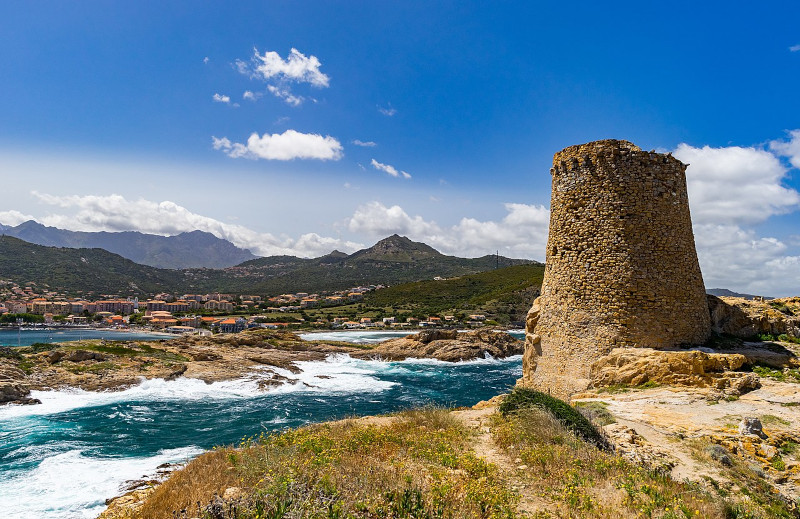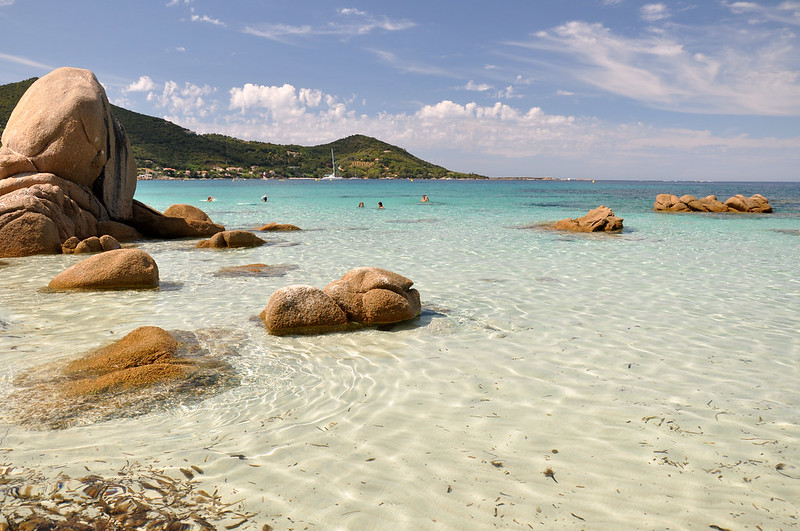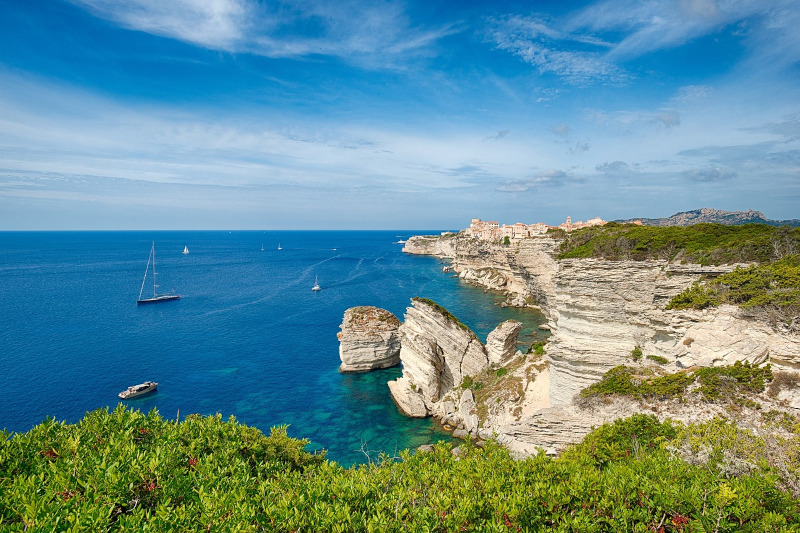
Corsica Facts
- The deceptively simple term of Corsica serves as the english language name for this stunningly beautiful island. In French, though, it bears the very similar title of Corse. No matter which of these one uses, however, it remains a true geological marvel.
- The exact origin of the island’s name, in any of its major forms, though, remains something of a mystery. Archaeological evidence indicates that it’s been occupied since at least the Mesolithic era, which ran from approximately 15,000 to 5,000 years ago.
- One possible origin source for the title, and perhaps currently the most likely, comes from the time of the ancient Greeks. That civilization knew this natural wonder by several terms. These inclued the names of Corsis, Kalliste, Cyrnos, Cernealis, or Cirné.
- Ongoing scientific investigation further indicates that the first permanent inhabitation of the site began around 8,000 years ago. Prior to that, human presence was sporadic and temporary. In that time it’s hosted several different distinct civilizations.
- Today, the beautiful Corsica represents a prefecture of one of the countries on the local continent. It also distinguishes itself as the fourth-largest island in its immediate part of the world. It’s truly a work of geological art deserving of appreciation and protection.
Related Articles




Corsica Physical Description
The magnificent Corsica holds a beauty and appeal that almost immediately captivates those who see it for the first time. Yet that beauty takes many forms, with a variety of landscapes. As indicated previously, the formation also boasts some highly respectable dimensions.
The wonder of geological processes possesses a total area equaling roughly 3,368 sq mi (8,722 sq km). Its overall shape, though, is generally rectangular, but with highly irregular outlines. Overall, it measures 114 mi (183 km) in length, and 52 mi (83 km) at its widest point.
About 41% of that total area, however, is presently dedicated to nature reserves. Most of that lies in the interior section of the island. The landscape there consists of a combination of rugged hills, jagged peaks, forested regions, and deep ravines throughout the region.
The bulk of its area remains quite mountainous. In fact, a single mountain chain comprises fully two-thirds of its surface. The highest of these numerous peaks, Monte Cinto, measures 8,878 ft (2,706 m). Roughly 120 other surrounding summits exceed 6,600 ft (2,000 m).
Yet the visual splendor of Corsica doesn’t simply end there. That’s because the site also contains 620 mi (1,000 km) of coastline. Along this expanse, over 200 individual beaches appear. Beautiful, often dense, forests further cover 20% of the surface area of the island.

Corsica Location, Formation, and Ecology
The mesmerizing island of Corsica formed in a region of the world already renowned for its abundance of natural marvels. In fact, that general area of the globe won’t surprise most people. That’s true since its creation placed it just off the coast of the continent of Europe.
The captivating site lies 110 mi (177 km) off the southeastern tip of France. That location also places it even closer to Italy, at just 56 mi (90 km) distant. Yet the closest landmass isn’t the continent. That’s because it sits just 6.8 mi (11 km) from the nearby island of Sardinia.
The island formed due to a combination of geological forces. In the beginning, movement of the local tectonic plate pushed a granite protrusion upward. Around 250 million years ago, the collision of Europe and Africa began this slow but inexorable, and ongoing, motion.
Subsequent to that, and much later, other factors came into play. Beginning around 50 million years ago, natural processess pressed enormous quantities of sedimentary rock against the granite. This action created much of what now comprises the soil of the island.
Various factors blessed the majestic Corsica with a remarkably wide range of ecosystems. In fact, this gem of natural forces boasts an impressive total of four separate and distinct ecological zones. Most experts roughly separate these different regions based on altitude.
The estuarine zone extends from seal level to about 33 ft (10 m). From there to 2,000 ft (600 m) it holds a definite Mediterranean climate. From there up to 5,900 ft (1,800 m), however, the site is a temperate montane zone. Next, up to 8,900 ft (2,700 m) lies the alpine zone.
The local flora abounds, and includes many flowers, grasses, shrubs, and trees such as pine, oak, and various deciduous trees and forests. Quantities of fauna also flourish here. This includes many bird species, as well as a surprising array of reptilians and amphibians.
Features Sharing Its Region



Check out our other articles on 7 Magical North American Moths, Striped Skunk, Sacred Valley, Kinnikinnick, Bluespotted Ribbontail Ray, Alligator Snapping Turtle









Leave a Reply